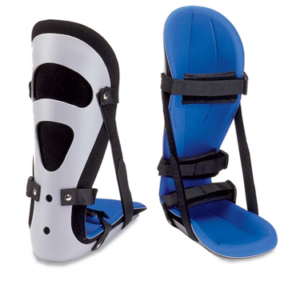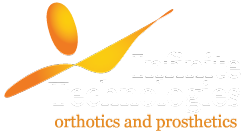Contact Us
Management of Adolescent Idiopathic Scoliosis
Adolescent Idiopathic Scoliosis is an abnormal curvature of the spine that appears in late childhood and into a patient’s teenage years. It is diagnosed through physical exam and x-rays. The spine develops a curvature, usually presenting as an “S” or “C” shape and can also have slightly twisted or rotated presentation. The curve can span the entire spine or just affect part of the spine. The term idiopathic means that we do not know the exact cause of the condition.
There are a few ways to manage scoliosis. This usually begins with observing the curve through x-ray and monitoring the degree of the curvature. Should the curve reach 25 degrees of magnitude a scoliosis brace may be recommended to help manage this. This type of orthosis is called a TLSO (thoracic lumbar sacral orthosis). At times, even with compliant brace treatment, surgery is the only way to correct a patient’s spine if the curve becomes severe enough.
Once prescribed by a pediatrician or an orthopedic specialist, a TLSO is generally worn until the patient reaches skeletal maturity. This often means a brace may be worn for several years. TLSO’s are worn on average anywhere from 18-23 hours a day. They are removed for bathing, sports and to take a break during the day for skin checks. There are also options for braces that are only worn at night if ordered by the doctor and appropriate for the patient’s curvature.
The role of the orthotist is to evaluate a patient in person but also assess their x-ray. Each patient’s curve will present different and the TLSO is designed to address the curve through biomechanical points of pressure. The brace is made of a rigid plastic with foam lining. The trimlines of this brace along with padding on the inside are placed such that they are providing corrective forces to the spine. The brace will hold the spine straight when the patient has the brace on, but it will not correct the patient’s spine and keep it straight. There are times when a few degrees of correction can be gained that remains when the brace is discontinued but overall the goal is to halt progression of the scoliosis while the patient is still growing.
Orthotists frequently follow-up with these patients to assess the fit of the brace to be sure it is still fitting appropriately based on growth. Patients also follow-up every 4-6 months with their prescribing physician to check on the curve and determine how much growth is left to get an idea of how much longer a patient will need to wear the brace.
With compliant wear and maintaining proper follow-up protocol chances of successful outcomes with orthotic management of Adolescent Idiopathic Scoliosis are typically very high. Patient’s are able to maintain their active lifestyles and be involved with sports, dancing and any activities of daily living that they enjoy!





